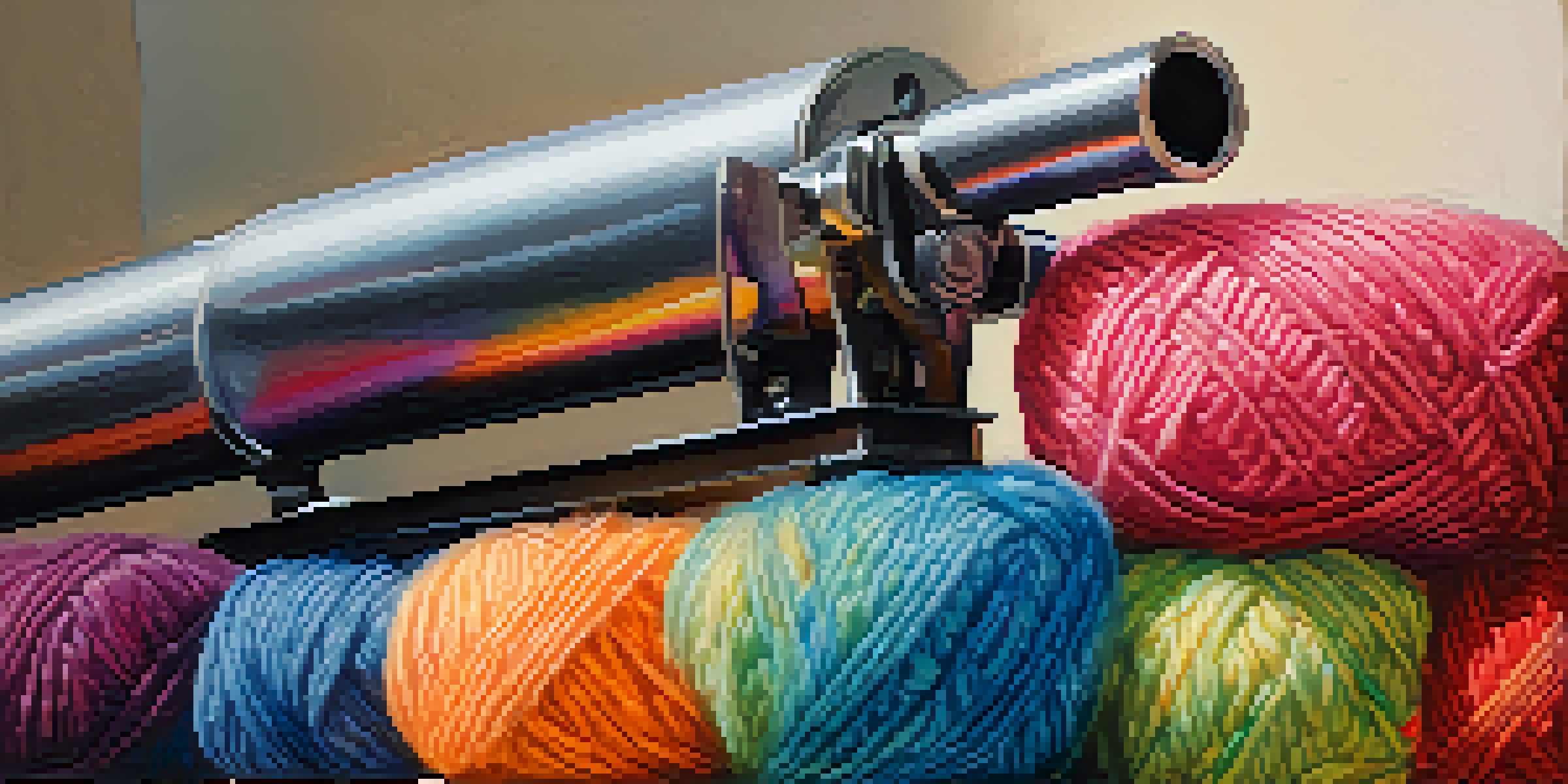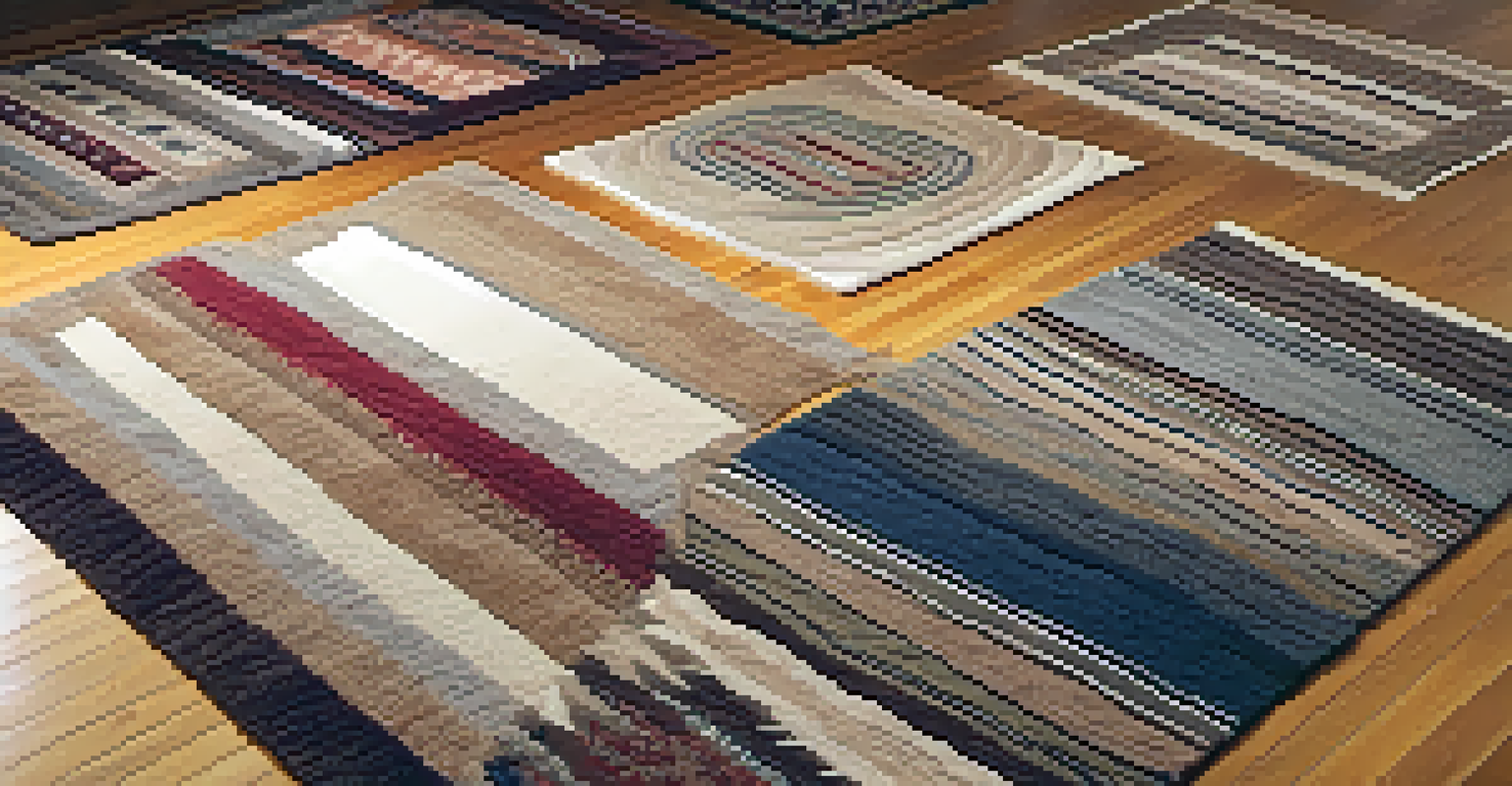Understanding Tufting Guns: A Beginner's Guide

What Are Tufting Guns and Why Use Them?
Tufting guns are specialized tools designed for creating rugs and carpets by pushing yarn through a backing material. They offer a quicker alternative to traditional hand-tufting methods, allowing you to produce intricate designs in less time. With the rising popularity of DIY home decor, tufting guns have become a favorite among hobbyists and professional creators alike.
Creativity takes courage.
Using a tufting gun can significantly reduce the effort required to create textured pieces. Instead of spending hours knotting yarn by hand, you can simply guide the gun along your desired pattern. This efficiency doesn’t just save time; it also opens the door for you to experiment with various designs and techniques without the overwhelming commitment.
Whether you're a seasoned crafter or a complete beginner, tufting guns provide the flexibility to explore your creativity in a fun and engaging way. They empower you to produce beautiful, personalized pieces that reflect your unique style, making them an invaluable addition to your crafting toolkit.
Types of Tufting Guns: Which One Is Right for You?
There are generally two main types of tufting guns: cut pile and loop pile. Cut pile guns create a plush, velvety texture, while loop pile guns produce a more structured, tighter finish. Understanding the differences between these types is essential to choosing the right tool for your project.

If you're aiming for a soft rug perfect for cozy spaces, a cut pile gun would be your best bet. On the other hand, if you're looking to create durable outdoor mats or more resilient designs, the loop pile gun might be the way to go. Each type offers unique advantages based on the final look and feel you want to achieve.
Tufting Guns Simplify Crafting
Tufting guns streamline the rug-making process, allowing both beginners and seasoned creators to produce intricate designs with ease.
It's also worth considering the weight and ease of use of the tufting gun when making your selection. Beginners might prefer a lightweight model that’s easier to handle, while more advanced users may seek out features that offer greater control and precision. Finding the right match will enhance your tufting experience.
How to Use a Tufting Gun: Step-by-Step Guide
Using a tufting gun might seem daunting at first, but once you get the hang of it, you'll find it quite intuitive. Start by securing your backing material on a tufting frame, making sure it’s taut. Then, thread your yarn through the gun, adjusting the tension to suit your project needs.
The only way to do great work is to love what you do.
As you begin tufting, hold the gun at a consistent angle to create even stitches. Move slowly along your desired pattern, ensuring that each stitch is firmly set. It may take a little practice to master the technique, but with patience, you’ll quickly see your design come to life.
Don’t forget to regularly check your progress and make adjustments as needed. If you notice any unevenness, it’s easier to correct it early on rather than later. Remember, crafting is all about enjoying the process, so take your time and have fun experimenting with different designs!
Essential Tools and Materials for Tufting
Aside from your tufting gun, there are several essential tools and materials you'll need for successful tufting. A sturdy tufting frame is crucial for keeping your backing material taut, which aids in achieving even stitches. Additionally, high-quality yarn in various colors can help you create vibrant, eye-catching designs.
You’ll also want to have a pair of scissors for trimming excess yarn and a ruler or measuring tape for precise measurements. A marking tool is helpful for outlining your design on the backing material before you start tufting. Having these tools on hand ensures a smoother crafting experience.
Choose the Right Tufting Gun Type
Understanding the differences between cut pile and loop pile tufting guns helps you select the best tool for your desired rug texture.
Lastly, consider investing in safety goggles and a dust mask, especially if you’re working with materials that can create debris. While tufting is generally safe, protecting yourself is always a good practice. Being well-prepared will make your tufting project more enjoyable and efficient.
Common Mistakes to Avoid When Tufting
Even seasoned crafters can make mistakes when tufting, so it’s essential to be aware of common pitfalls. One frequent error is using the wrong yarn type for your project, which can lead to inconsistent textures or durability issues. Always choose yarn that suits both your design and intended use.
Another mistake is not securing your backing material properly, which can cause shifting and uneven stitches. Take your time to ensure it’s tightly fastened to your tufting frame before starting. This step is crucial for achieving a professional-looking finish.
Lastly, beginners often rush the process, leading to frustration and mistakes. Remember, tufting is a craft that benefits from patience and practice. Embrace the learning curve, and don’t be afraid to start over if something doesn’t go as planned. Each project is an opportunity to improve your skills!
Finishing Touches: Caring for Your Tufted Creations
Once you've completed your tufted piece, it's time to give it the finishing touches. Trim any excess yarn to create a clean edge, and inspect your work for any loose threads. These details can make a significant difference in the overall appearance of your creation.
Next, consider applying a backing material to provide added durability and stability. This step is especially important for rugs that will see high foot traffic. A quality backing can help your piece maintain its shape and withstand wear over time.
Avoid Common Tufting Mistakes
Being aware of common pitfalls, like using the wrong yarn or improperly securing your backing material, can significantly enhance your tufting results.
Finally, proper care and maintenance will ensure your tufted items last for years. Regular vacuuming, spot cleaning, and occasional deep cleaning are essential to keep your creations looking fresh and vibrant. Treat your tufted pieces with care, and they’ll continue to bring warmth and style to your home.
Where to Find Inspiration for Your Tufting Projects
Finding inspiration for your tufting projects can be as simple as browsing social media platforms like Instagram or Pinterest. These platforms are teeming with creative ideas and stunning designs shared by fellow tufting enthusiasts. You can easily discover new patterns, color combinations, and techniques to try in your own work.
You might also consider joining online tufting communities or forums where you can share your creations and gain feedback from others. Engaging with like-minded crafters can spark new ideas and help you refine your skills. Plus, it’s a great way to build connections and learn from experienced tufting artists.

Lastly, don’t underestimate the power of nature and your surroundings as sources of inspiration. The colors and textures found in your environment can influence your designs in unexpected ways. Take a walk or browse through your favorite decor magazines to discover ideas that resonate with you and your unique style.